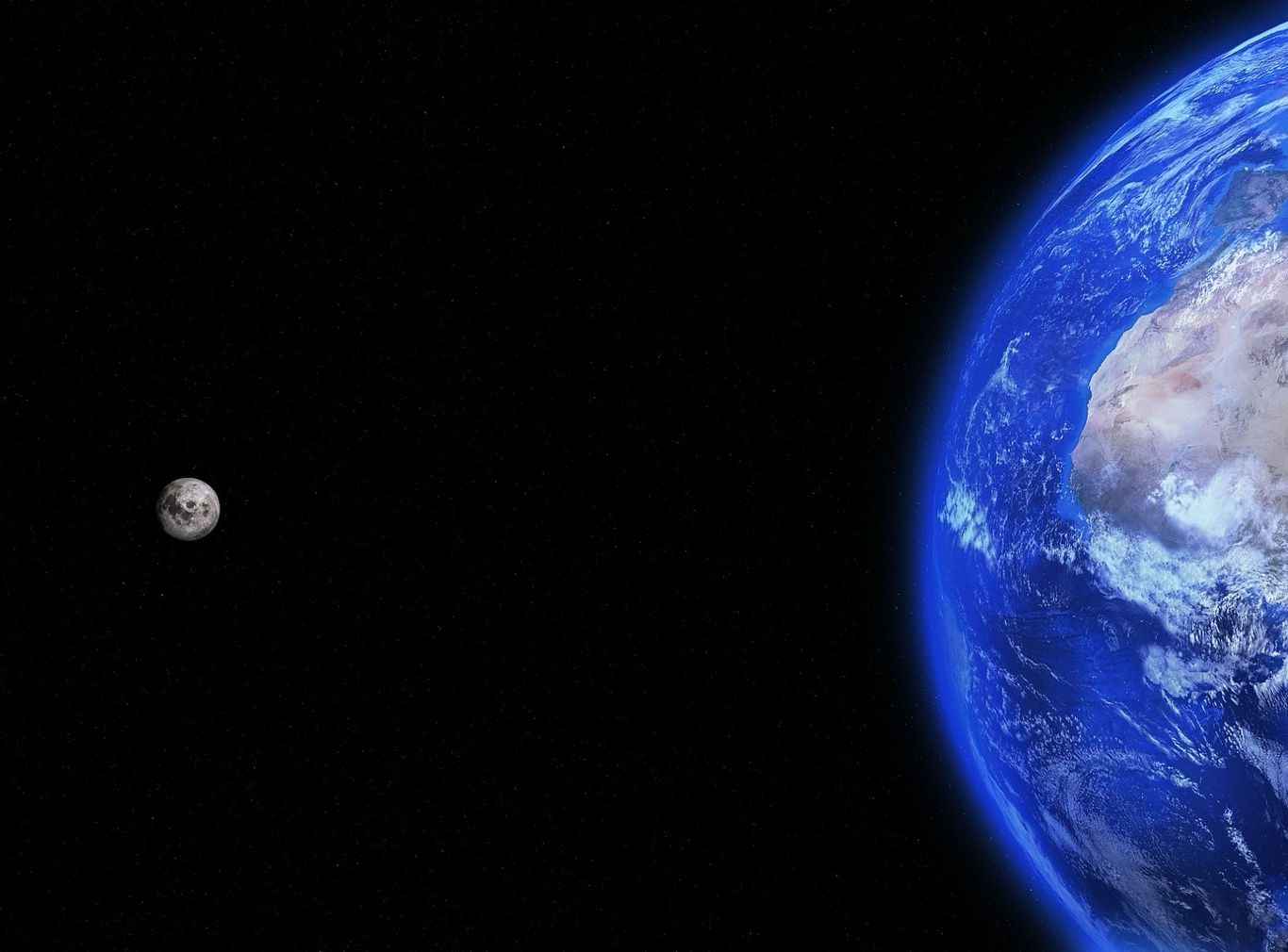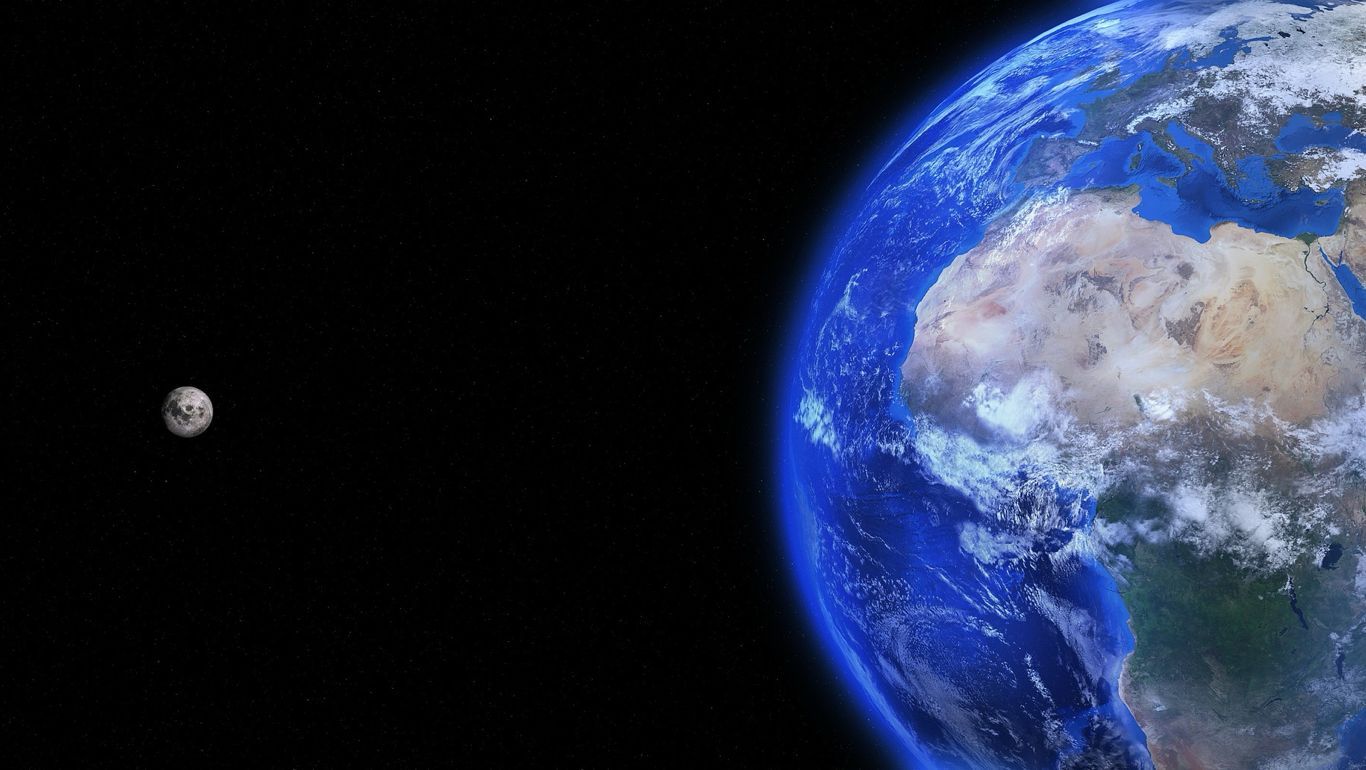05 January 2024

A new era for the lunar economy (Image - Pixabay)
In the run-up to the highly anticipated lunar race at the beginning of this year, we’re also reminded about the reasons why interest is increasing in this area. While lunar exploration was once about what humankind can achieve in the quest for scientific knowledge, the Moon is now more becoming a place of economic activity and industrial enterprise.
In recent weeks we wrote about the developments from Lonestar Data Holdings (US), who will launch their first lunar data centre demonstration mission with Intuitive Machines next month. Data recovery as a service (DRaaS), utilising data centres on the Moon, offers the unique opportunity to secure data from natural and human-made disasters on Earth.
Additionally, this week we learnt more about Los Angeles-based startup, Copernic Space, who are aiming to create a digital marketplace for selling space assets. Through their Web3 platform the company enables access to the space economy, scaling financing and commercialisation for space companies. Assets could include actual space assets, or financial stakes in space ventures.
The company is now gearing-up to create accessibility for lunar assets, and will send a payload of digital assets to the Moon (including music, code, company registrations and art) on a launch with Firefly Aerospace and their Blue Ghost lunar lander, later this year.
Interestingly, Copernic will send the payload in a capsule from another startup, LifeShip, who, similar to Lonestar Data, are looking to create offworld storage on the Moon, but not just for digital data, but for human DNA.
We expect the exciting applications and possibilities of lunar exploration to be expanded on further this year, from services such as DRaaS, to resource extraction and in-situ manufacturing.
iSpace and Firefly aim for 2024 lunar launches, former also announce refuelling partnership
The news regarding Copernic also tells us more about what’s to come in regards to lunar landings this year. Firefly Aerospace will carry the payload on their Blue Ghost mission one, set to launch this year, also carrying payloads as part of NASA’s Commercial Lunar Payloads Services programme.
In addition to this, Japanese startup, iSpace, have announced that they are aiming for a second landing attempt in the fourth quarter of this year, and will carry a micro-rover, used for taking images of lunar regolith. iSpace made a landing attempt in April last year, but crashed into the surface.
The company has also announced the signing of a memorandum of understanding (MoU) with Orbit Fab (US), in order to develop methods of refuelling in outer space. Orbital refuelling is being explored by a number of entities, including Astroscale (Japan). However, it is understood that this new partnership will be used to demonstrate how to utilise reouter space sources such as water and lunar regolith, eliminating the need to launch resources from Earth.
A later goal would then be for Orbit Fab to refuel iSpace lander vehicles, allowing for extended missions and improving efficiency. Utilising local resources on the Moon is a major step towards a sustained lunar presence, opening up the possibilities of lunar industries for Earthbound purposes, such as resource mining.

A race to the Moon for resources? (Image - Pixabay)
UNOOSA promotes global dialogue, ever-pressing in the backdrop of growing competition
Growing interest in lunar exploration, and overall input by more entities in New Space, highlights the need for regulation and universal legal frameworks for space. It is widely known that innovation is quickly outpacing law-making in space, with activities only loosely held together by the limited and outdated Outer Space Treaty (1967).
Space is becoming increasingly important in the context of international relations, and it’s becoming more pressing that dialogue is opened-up in regards to fair rule-making in order to encourage constructive and sustainable development aims. This is ever-more pressing as space becomes a geopolitical matter, with leading entities seeking to secure access to finite orbital slots and outer space resources.
Some efforts are being made through frameworks such as the US Artemis Accords and the China-led ILRS project. However, it could simply be the case that the developments of these frameworks is actually leading to the growth of rival ‘space blocs’.
In a recent effort to create dialogue in this area, the United Nations Office for Outer Space Affairs (UNOOSA) has launched the "UNOOSA Space Bridge”, which aims to bring together stakeholders and promote solutions that support sustainability and the United Nations Sustainability Development Goals (SDGs).
Space is not only vital for defence, communications and Earth imaging, but it is now a growing commercial economy. Recent estimates have a put the space economy on course for a $1 trillion valuation by the end of the decade, increasing the likelihood of competition and access to valuable resources. As has been seen throughout history, the scramble for unregulated access to such resources more often leads to dispute or conflict, and there is no guarantee that, without regulations, space would be immune from the same eventuality.
As we begin the year with excitement surrounding the potential of a new era for the lunar economy, it’s also worth noting the need to simultaneously build the frameworks needed in order to guarantee a peaceful and sustainable future in outer space.
Our future in space

A new era for the lunar economy (Image - Pixabay)
05 January 2024
Copernic Lunar Asset Marketplace, iSpace Refueling Partnership, and UN Initiates International Dialogue Initiatives - Space News Roundup
In the run-up to the highly anticipated lunar race at the beginning of this year, we’re also reminded about the reasons why interest is increasing in this area. While lunar exploration was once about what humankind can achieve in the quest for scientific knowledge, the Moon is now more becoming a place of economic activity and industrial enterprise.
In recent weeks we wrote about the developments from Lonestar Data Holdings (US), who will launch their first lunar data centre demonstration mission with Intuitive Machines next month. Data recovery as a service (DRaaS), utilising data centres on the Moon, offers the unique opportunity to secure data from natural and human-made disasters on Earth.
Additionally, this week we learnt more about Los Angeles-based startup, Copernic Space, who are aiming to create a digital marketplace for selling space assets. Through their Web3 platform the company enables access to the space economy, scaling financing and commercialisation for space companies. Assets could include actual space assets, or financial stakes in space ventures.
The company is now gearing-up to create accessibility for lunar assets, and will send a payload of digital assets to the Moon (including music, code, company registrations and art) on a launch with Firefly Aerospace and their Blue Ghost lunar lander, later this year.
Interestingly, Copernic will send the payload in a capsule from another startup, LifeShip, who, similar to Lonestar Data, are looking to create offworld storage on the Moon, but not just for digital data, but for human DNA.
We expect the exciting applications and possibilities of lunar exploration to be expanded on further this year, from services such as DRaaS, to resource extraction and in-situ manufacturing.
iSpace and Firefly aim for 2024 lunar launches, former also announce refuelling partnership
The news regarding Copernic also tells us more about what’s to come in regards to lunar landings this year. Firefly Aerospace will carry the payload on their Blue Ghost mission one, set to launch this year, also carrying payloads as part of NASA’s Commercial Lunar Payloads Services programme.
In addition to this, Japanese startup, iSpace, have announced that they are aiming for a second landing attempt in the fourth quarter of this year, and will carry a micro-rover, used for taking images of lunar regolith. iSpace made a landing attempt in April last year, but crashed into the surface.
The company has also announced the signing of a memorandum of understanding (MoU) with Orbit Fab (US), in order to develop methods of refuelling in outer space. Orbital refuelling is being explored by a number of entities, including Astroscale (Japan). However, it is understood that this new partnership will be used to demonstrate how to utilise reouter space sources such as water and lunar regolith, eliminating the need to launch resources from Earth.
A later goal would then be for Orbit Fab to refuel iSpace lander vehicles, allowing for extended missions and improving efficiency. Utilising local resources on the Moon is a major step towards a sustained lunar presence, opening up the possibilities of lunar industries for Earthbound purposes, such as resource mining.

A race to the Moon for resources? (Image - Pixabay)
UNOOSA promotes global dialogue, ever-pressing in the backdrop of growing competition
Growing interest in lunar exploration, and overall input by more entities in New Space, highlights the need for regulation and universal legal frameworks for space. It is widely known that innovation is quickly outpacing law-making in space, with activities only loosely held together by the limited and outdated Outer Space Treaty (1967).
Space is becoming increasingly important in the context of international relations, and it’s becoming more pressing that dialogue is opened-up in regards to fair rule-making in order to encourage constructive and sustainable development aims. This is ever-more pressing as space becomes a geopolitical matter, with leading entities seeking to secure access to finite orbital slots and outer space resources.
Some efforts are being made through frameworks such as the US Artemis Accords and the China-led ILRS project. However, it could simply be the case that the developments of these frameworks is actually leading to the growth of rival ‘space blocs’.
In a recent effort to create dialogue in this area, the United Nations Office for Outer Space Affairs (UNOOSA) has launched the "UNOOSA Space Bridge”, which aims to bring together stakeholders and promote solutions that support sustainability and the United Nations Sustainability Development Goals (SDGs).
Space is not only vital for defence, communications and Earth imaging, but it is now a growing commercial economy. Recent estimates have a put the space economy on course for a $1 trillion valuation by the end of the decade, increasing the likelihood of competition and access to valuable resources. As has been seen throughout history, the scramble for unregulated access to such resources more often leads to dispute or conflict, and there is no guarantee that, without regulations, space would be immune from the same eventuality.
As we begin the year with excitement surrounding the potential of a new era for the lunar economy, it’s also worth noting the need to simultaneously build the frameworks needed in order to guarantee a peaceful and sustainable future in outer space.
Share this article
05 January 2024
Copernic Lunar Asset Marketplace, iSpace Refueling Partnership, and UN Initiates International Dialogue Initiatives - Space News Roundup

A new era for the lunar economy (Image - Pixabay)
In the run-up to the highly anticipated lunar race at the beginning of this year, we’re also reminded about the reasons why interest is increasing in this area. While lunar exploration was once about what humankind can achieve in the quest for scientific knowledge, the Moon is now more becoming a place of economic activity and industrial enterprise.
In recent weeks we wrote about the developments from Lonestar Data Holdings (US), who will launch their first lunar data centre demonstration mission with Intuitive Machines next month. Data recovery as a service (DRaaS), utilising data centres on the Moon, offers the unique opportunity to secure data from natural and human-made disasters on Earth.
Additionally, this week we learnt more about Los Angeles-based startup, Copernic Space, who are aiming to create a digital marketplace for selling space assets. Through their Web3 platform the company enables access to the space economy, scaling financing and commercialisation for space companies. Assets could include actual space assets, or financial stakes in space ventures.
The company is now gearing-up to create accessibility for lunar assets, and will send a payload of digital assets to the Moon (including music, code, company registrations and art) on a launch with Firefly Aerospace and their Blue Ghost lunar lander, later this year.
Interestingly, Copernic will send the payload in a capsule from another startup, LifeShip, who, similar to Lonestar Data, are looking to create offworld storage on the Moon, but not just for digital data, but for human DNA.
We expect the exciting applications and possibilities of lunar exploration to be expanded on further this year, from services such as DRaaS, to resource extraction and in-situ manufacturing.
iSpace and Firefly aim for 2024 lunar launches, former also announce refuelling partnership
The news regarding Copernic also tells us more about what’s to come in regards to lunar landings this year. Firefly Aerospace will carry the payload on their Blue Ghost mission one, set to launch this year, also carrying payloads as part of NASA’s Commercial Lunar Payloads Services programme.
In addition to this, Japanese startup, iSpace, have announced that they are aiming for a second landing attempt in the fourth quarter of this year, and will carry a micro-rover, used for taking images of lunar regolith. iSpace made a landing attempt in April last year, but crashed into the surface.
The company has also announced the signing of a memorandum of understanding (MoU) with Orbit Fab (US), in order to develop methods of refuelling in outer space. Orbital refuelling is being explored by a number of entities, including Astroscale (Japan). However, it is understood that this new partnership will be used to demonstrate how to utilise reouter space sources such as water and lunar regolith, eliminating the need to launch resources from Earth.
A later goal would then be for Orbit Fab to refuel iSpace lander vehicles, allowing for extended missions and improving efficiency. Utilising local resources on the Moon is a major step towards a sustained lunar presence, opening up the possibilities of lunar industries for Earthbound purposes, such as resource mining.

A race to the Moon for resources? (Image - Pixabay)
UNOOSA promotes global dialogue, ever-pressing in the backdrop of growing competition
Growing interest in lunar exploration, and overall input by more entities in New Space, highlights the need for regulation and universal legal frameworks for space. It is widely known that innovation is quickly outpacing law-making in space, with activities only loosely held together by the limited and outdated Outer Space Treaty (1967).
Space is becoming increasingly important in the context of international relations, and it’s becoming more pressing that dialogue is opened-up in regards to fair rule-making in order to encourage constructive and sustainable development aims. This is ever-more pressing as space becomes a geopolitical matter, with leading entities seeking to secure access to finite orbital slots and outer space resources.
Some efforts are being made through frameworks such as the US Artemis Accords and the China-led ILRS project. However, it could simply be the case that the developments of these frameworks is actually leading to the growth of rival ‘space blocs’.
In a recent effort to create dialogue in this area, the United Nations Office for Outer Space Affairs (UNOOSA) has launched the "UNOOSA Space Bridge”, which aims to bring together stakeholders and promote solutions that support sustainability and the United Nations Sustainability Development Goals (SDGs).
Space is not only vital for defence, communications and Earth imaging, but it is now a growing commercial economy. Recent estimates have a put the space economy on course for a $1 trillion valuation by the end of the decade, increasing the likelihood of competition and access to valuable resources. As has been seen throughout history, the scramble for unregulated access to such resources more often leads to dispute or conflict, and there is no guarantee that, without regulations, space would be immune from the same eventuality.
As we begin the year with excitement surrounding the potential of a new era for the lunar economy, it’s also worth noting the need to simultaneously build the frameworks needed in order to guarantee a peaceful and sustainable future in outer space.
Share this article
External Links
This Week
News articles posted here are not property of ANASDA GmbH and belong to their respected owners. Postings here are external links only.





